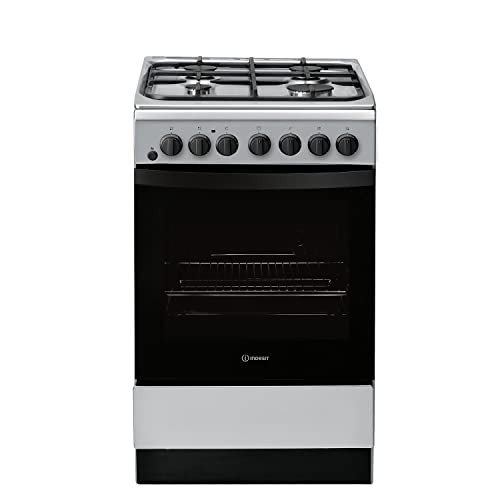15 Best Documentaries About Hob And Oven
Understanding Hobs and Ovens: The Essential Kitchen Appliances
In the realm of kitchen home appliances, couple of items are as necessary as hobs and ovens. These appliances form the foundation of cooking activities, making it possible for individuals to create everything from basic meals to elaborate banquets. Understanding the differences, types, and performances of hobs and ovens can significantly enhance one's cooking experience. This short article looks into the complexities of hobs and ovens, offering insights that deal with both beginner and experienced cooks.
What Is a Hob?
A hob, frequently referred to as a cooktop or range top, is the flat surface area on which pots and pans are placed for cooking. Hobs are geared up with heating elements that create the needed heat for cooking food. They can be found in different types, including gas, electric, induction, and ceramic options. Each type offers distinct advantages and disadvantages.
Types of Hobs
Gas Hobs:
- Heat Source: Natural gas or lp.
- Advantages: Instant heat control and responsiveness, preferred by many chefs for precise cooking.
- Disadvantages: Requires a gas connection and can be less energy-efficient.
Electric Hobs:
- Heat Source: Electric coils or smooth glass-ceramic surfaces.
- Benefits: Generally much easier to clean up, even heating, and widely offered.
- Disadvantages: Slower to warm up and cool off compared to gas.
Induction Hobs:
- Heat Source: Electromagnetic currents.
- Advantages: Quick heating, energy-efficient, and only heats the pots and pans, not the surrounding surface.
- Drawbacks: Requires compatible pots and pans (ferrous materials).
Ceramic Hobs:
- Heat Source: Electric and has a smooth glass surface area.
- Advantages: Sleek look, easy to clean, and even heating.
- Downsides: Can take longer to warm up and cool down.
What Is an Oven?
An oven is an enclosed home appliance that cooks food by surrounding it with dry heat. Buy Oven Online can be standalone units or integrated with hobs in a single device understood as a range. Ovens are flexible tools that can be used for baking, roasting, broiling, and more.
Kinds of Ovens
Traditional Ovens:
- Heat Source: Electric or gas.
- Benefits: Good for conventional baking and roasting.
- Downsides: Can have uneven heat circulation.
Convection Ovens:
- Heat Source: Electric or gas with a fan for circulating air.
- Advantages: More even cooking and quicker cooking times due to air flow.
- Downsides: Can be costlier and may need adjustments in cooking times.
Microwave Ovens:
- Heat Source: Microwaves.
- Advantages: Quick cooking and reheating; great for defrosting.
- Disadvantages: Can not brown or crisp food well.
Steam Ovens:
- Heat Source: Steam generation.
- Benefits: Retains nutrients and moisture in food, much healthier cooking choice.
- Disadvantages: Longer cooking times and normally greater expense.
Key Differences Between Hobs and Ovens
While hobs and ovens serve the primary purpose of cooking food, their functionalities and utilizes differ considerably. The following table sums up these essential distinctions:
Feature
Hob
Oven
Cooking Method
Direct heat
Enclosed heat
Primary Use
Boiling, sautéing, frying
Baking, roasting
Heat Source
Gas, electric, induction
Gas, electric, steam
Cooking Area
Flat surface area
Enclosed area
Cooking Time
Usually quicker
Varies based on meal
Control & & Precision
Immediate and direct
Count on settings and timers
Benefits of Using Hobs and Ovens Together
Integrating using a hob and an oven can greatly enhance the cooking procedure. Here are some advantages:
- Versatility: Different types of food can be cooked concurrently.
- Effectiveness: Using both enables different cooking methods, such as searing on the hob and baking in the oven.
- Time-Saving: Multi-tasking can significantly decrease total cooking time.
Maintenance and Care
To make sure the durability of hobs and ovens, regular maintenance is necessary. Here are some ideas:
For Hobs:
- Clean spills instantly to prevent staining.
- Use suitable cleaners for specific products (e.g., ceramic cleaner for glass-ceramic hobs).
- Routinely examine gas connections for leaks (for gas hobs).
For Ovens:
- Wipe down the interior after each use to avoid build-up.
- Usage self-cleaning functions if readily available, or use oven cleaners for difficult discolorations.
- Routinely check seals and gaskets for wear and tear (to keep heat effectiveness).
Frequently asked questions About Hobs and Ovens
1. What is the best type of hob for a novice cook?
Response: A ceramic or electric hob is often advised for newbies due to alleviate of usage and cleansing.
2. Can I use any cookware on an induction hob?
Response: No, induction hobs need cookware made from magnetic materials (e.g., cast iron or stainless steel).
3. How typically should I clean my oven?
Answer: It is advisable to clean your oven every few months, or more regularly if you utilize it frequently.
4. Is it much better to bake in a stove?
Answer: Yes, stoves are often better for baking as they offer even heat distribution. However, Buy Electric Oven Online may benefit from traditional ovens.
Understanding the functionality and differences between hobs and ovens is vital for any cooking enthusiast. Whether one chooses the instantaneous heat of a gas hob or the accuracy of an induction cooktop, each type uses distinct advantages. Similarly, ovens vary widely in function, from traditional baking to steam cooking. By valuing these home appliances' functions in food preparation, cooks can improve their cooking abilities and simplify their kitchen activities.
